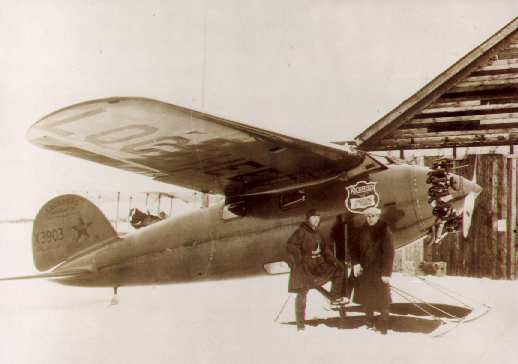
15–21 April 1928: Carl Benjamin (“Ben”) Eielson and George Hubert Wilkins, M.C. and Bar, flew from Point Barrow on the northern coast of Alaska across the Arctic Ocean to Spitsbergen, Svalbard, Norway. The distance was approximately 2,200 miles (3,540 kilometers). The crossing took about 20 hours, and was the first Arctic crossing by air. Their airplane was a Lockheed Vega, civil registration NX3903, the third aircraft of the type to be built.
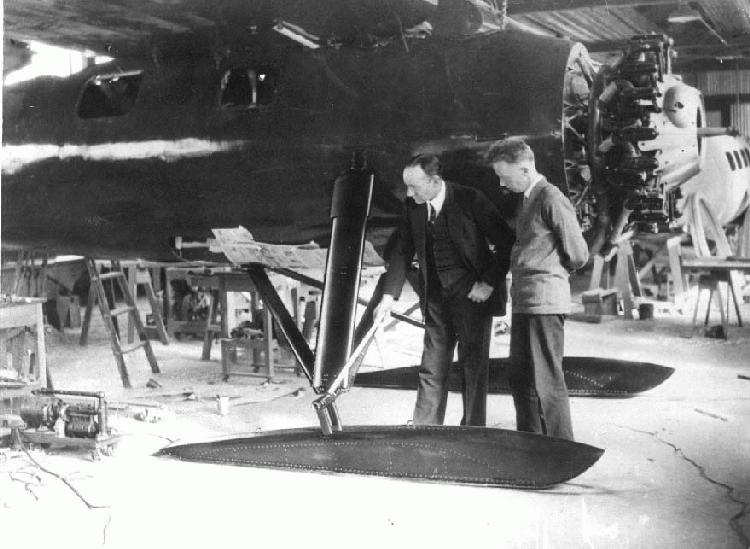
Eielson and Wilkins had made a prior attempt about a week earlier, but attempting to takeoff with a crosswind, had damaged the skis on the Vega. A spare set made of wood had been brought along and these were installed and after some delay, finally took off on April 15th.
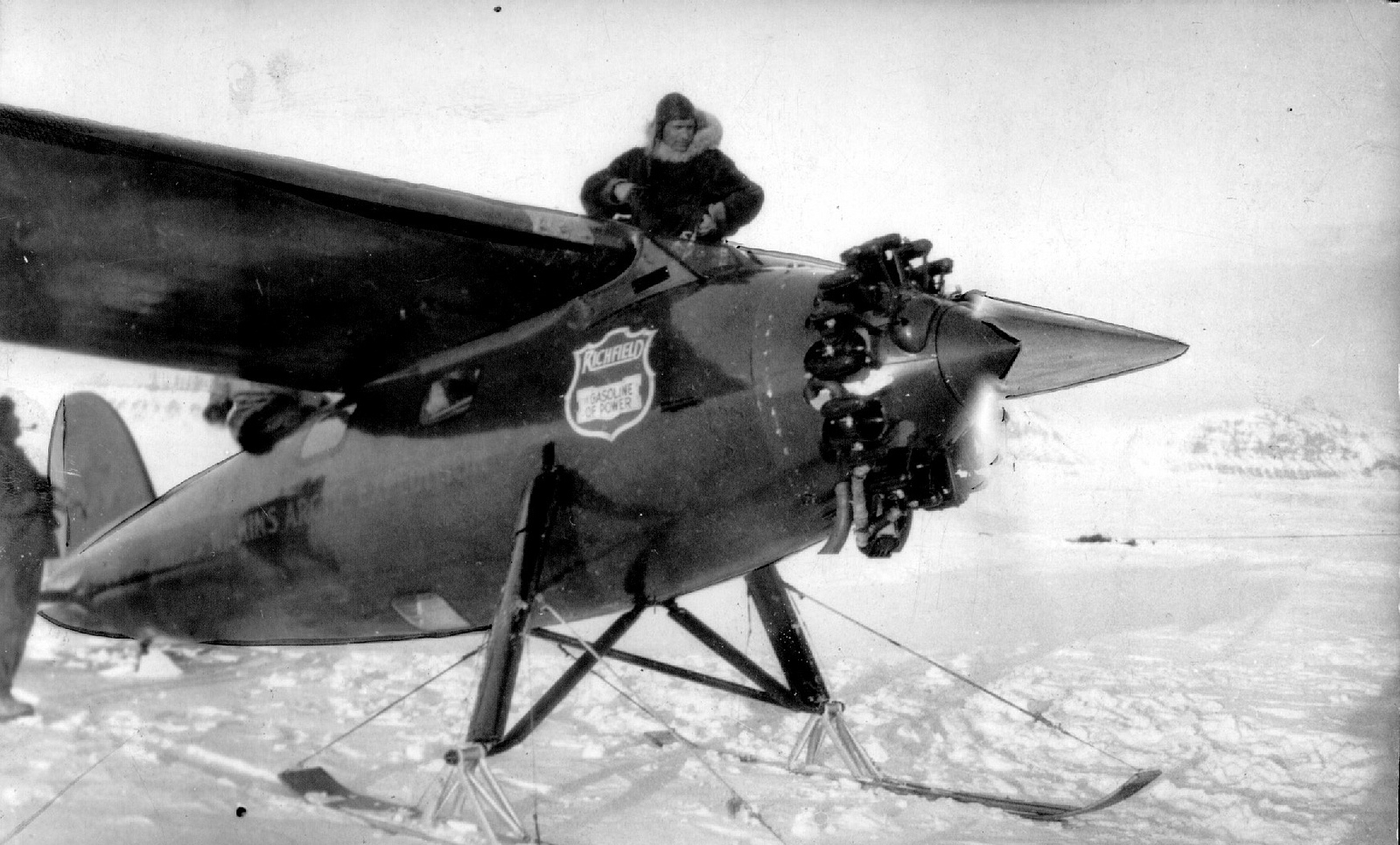
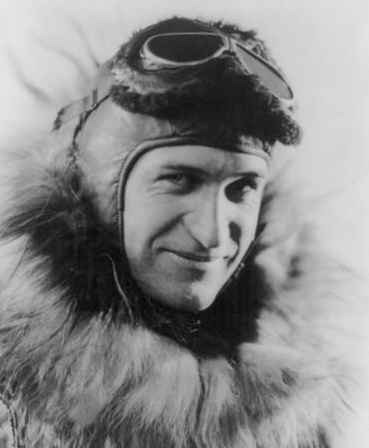
The planned route of flight was over the Canadian Arctic Islands and then around north Greenland then on to Spitsbergen, a large island in the Svalbard Archipelago, under the jurisdiction of Norway. Because of the proximity to the Magnetic Pole, a compass would have been useless for navigation. Hubert Wilkins used a Mk. V bubble sextant to calculate their position by taking sights of the sun which remained above the horizon for the entire duration of the flight.
They encountered head winds, cloudy weather and storms. The air temperature was -45 °C. (-49 °F.). As they estimated that they were nearing their destination, they encountered a severe snow storm. With fuel running low, the descended to look for a possible landing site. They were able to land on Deadman’s Island, off the north coast of Danskøya (Dane’s Island). The severe weather closed in and the fliers were stranded for 4 days. When it finally cleared enough for them to continue their journey there was some difficulty as the wooden skis kept freezing to the surface. After they took off and climbed to 3,000 feet (914.4 meters) they immediately sighted the radio towers of Grønfjorden on Nordenskiöld Land, their actual destination.
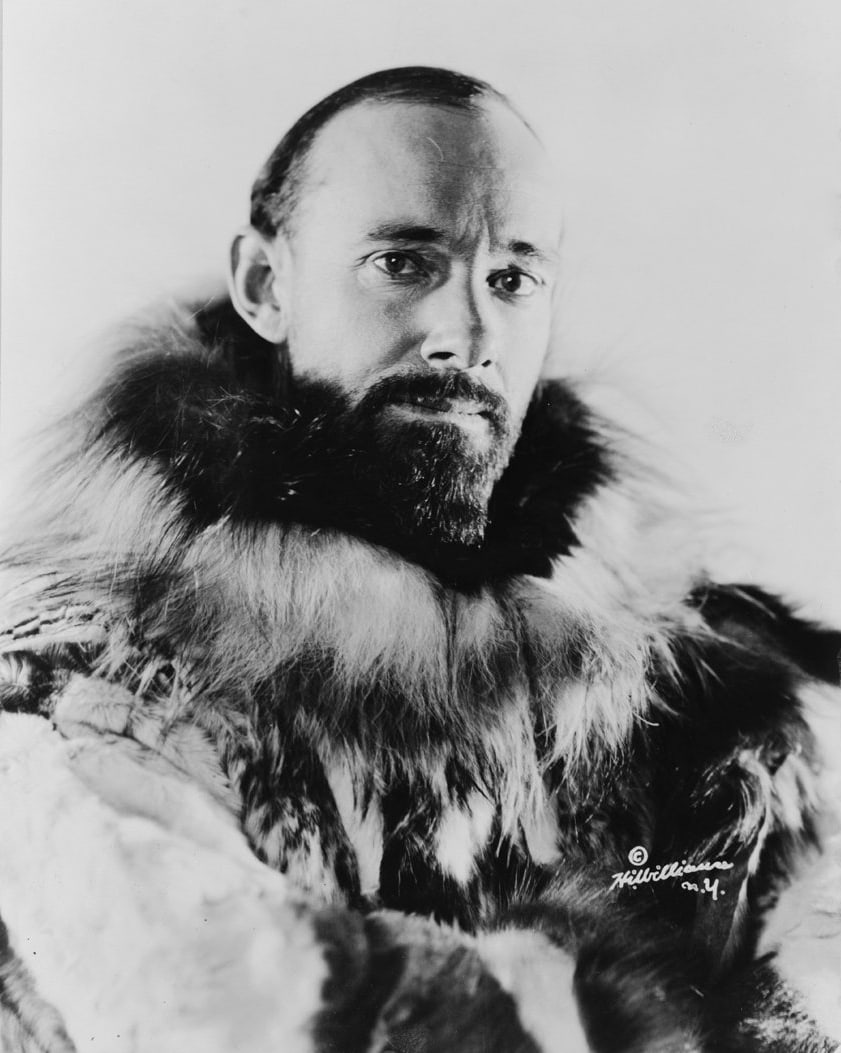
Of their flight, famed Norwegian explorer Roald Amundsen said, “No flight has been made anywhere, at any time, which could be compared with this.”
The Lockheed Vega was a very state-of-the-art aircraft for its time. The prototype flew for the first time 4 July 1927 at Mines Field, Los Angeles, California. It used a streamlined monocoque fuselage made of molded plywood. The wing and tail surfaces were fully cantilevered, requiring no bracing wires or struts to support them.
The Vega was flown by one pilot in an open cockpit and could carry four passengers in the cabin. It was 27 feet, 6 inches (8.382 meters) long with a wingspan of 41 feet, 0 inches (12.497 meters) and overall height of 8 feet, 2 inches (2.489 meters). The airplane had an empty weight of 1,875 pounds (851 kilograms) and a gross weight of 3,470 pounds (1,574 kilograms).
The early Vegas were powered by an air-cooled, normally-aspirated 787.26-cubic-inch-displacement (12.901 liter) Wright Whirlwind J-5C nine-cylinder radial engine with a compression ratio of 5.1:1. It was rated at 200 horsepower at 1,800 r.p.m., and 225 horsepower at 2,000 r.p.m. This was a direct-drive engine which turned a two-bladed Hamilton Standard propeller. The Wright J-5C was 2 feet, 10 inches (0.864 meters) long and 3 feet, 9 inches (1.143 meters) in diameter. It weighed 508 pounds (230.4 kilograms).
The Vega had a cruising speed of 118 miles per hour (190 kilometers per hour) and atop speed of 138 miles per hour (222 kilometers per hour)—very fast for its time. The airplane’s range was 900 miles (1,448.4 kilometers). It could fly at an altitude 15,000 feet (4,572 meters).
© 2017, Bryan R. Swopes